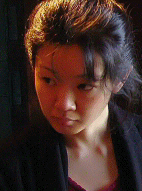|
|
|
Claude Debussy
b. St. Germain-en-Laye, 22 August 1862; d. Paris, 25 March 1918
En Blanc et Noir, for 2 pianos
Suffering from cancer for six years and reacting with sensitivity to the outbreak of World War I, Debussy began composing again in 1915 after a creative hiatus. "I have decided" he wrote, "that all things considered it would be cowardice on my part to join the ranks of the disabled and spend my time dwelling on the atrocities that have been committed without reacting to them by creating to the best of my ability a little of that beauty which the enemy is attacking with such fury…"
According to Debussy, referring to En Blanc et Noir, "These pieces draw their color, their emotion, simply from the piano, like the 'grays' of Velásquez, if I may so suggest. Anyway, all of the orchestral musicians are at the front." Indeed, this set of three pieces for two pianos exhibits sharp contrasts in mood and color both in the titles and within the pieces themselves reflecting Debussy's emotional state and the war itself.
The first section, Avec emportement (with anger), is a passionate waltz. In the text heading, using an except from the libretto of Gounod's Romeo and Juliet which refers to the disgrace of those who do not dance, it alludes to those who used medical excuses to evade serving in the war. This piece is dedicated to Serge Koussevitzky.
The second part, Lent, somber, is a grim war scene in memory of Jacques Charlot, a friend of Debussy who was killed in the war. The piece runs the gamut of emotions from despair to elation, and contains low sonorities, fragments of bugle calls and at one point quotes the Lutheran hymn "A Mighty Fortress is Our God."
The third part, Scherzando, is dedicated to Stravinsky, whom Debussy greatly admired for his revolutionary ballet "Le Sacre du Printemps".
Children’s Corner
Claude Debussy dedicated this 1908 cycle to his five year old daughter: "To my beloved Chouchou, with the tender excuses of her father for that which follows." The cycle may be inspired by Mussorgsky's cycle, The Nursery.
Doctor Gradus ad Parnassum – The title of this piece is a word play on Muzio Clementi's piano method titled Gradus ad Parnassum, and makes fun of finger exercises. According to Debussy "this is a kind of hygienic and advanced gymnastics; therefore, it is recommended to play this piece every morning on an empty stomach, beginning moderato, ending lively….."
Jimbo's Lullaby – The namesake of this lullaby is Chouchou's stuffed velvet elephant. The theme, beginning in the bass register, echoes the lullaby Do, do, l'enfant do, and is accompanied by second intervals which may represent the clumsy steps of the young elephant stepping on two keys simultaneously.
Serenade for the Doll – This piece was published separately in 1906. The grace notes in the melody, over a strict staccato rhythm, create the impression of a mechanical wind-up doll.
The Snow is Dancing – This piece is written in D Minor, the key which Debussy uses frequently in his compositions to symbolize cold or snow. The middle section has particularly intricate and delicate rhythms, which may portray the beauty and complexity of snowflakes.
The Little Shepherd – This short beautiful piece conveys a soliloquy on a shepherd's reed pipes, interspersed with dance tunes.
Golliwog's Cakewalk – This piece is named after a puppet with a black face created by British illustrator Florence Upton based on minstrel shows. The puppet endured long time popularity, but eventually became a victim of political correctness. In this piece, Debussy incorporates a typical ragtime rhythm, following the jazz-loving trend of French music at that time. Debussy interrupts the piece at one point with an ironic citation of Wagner's famous "Tristan chord" from Tristan and Isolde.
Markus Pawlik
|
|


